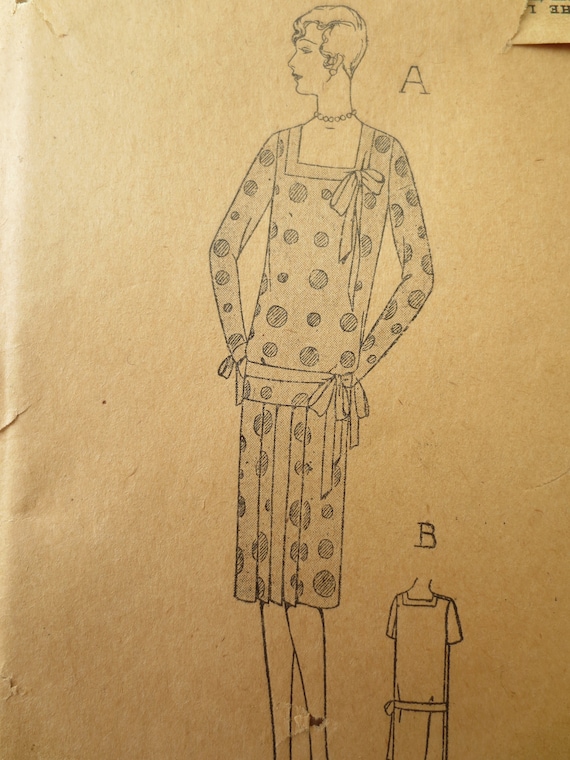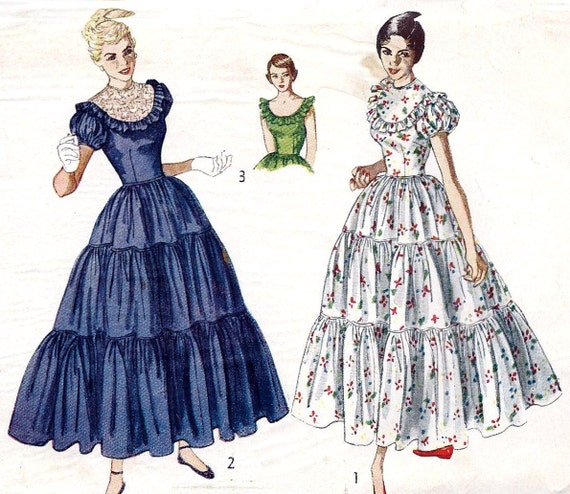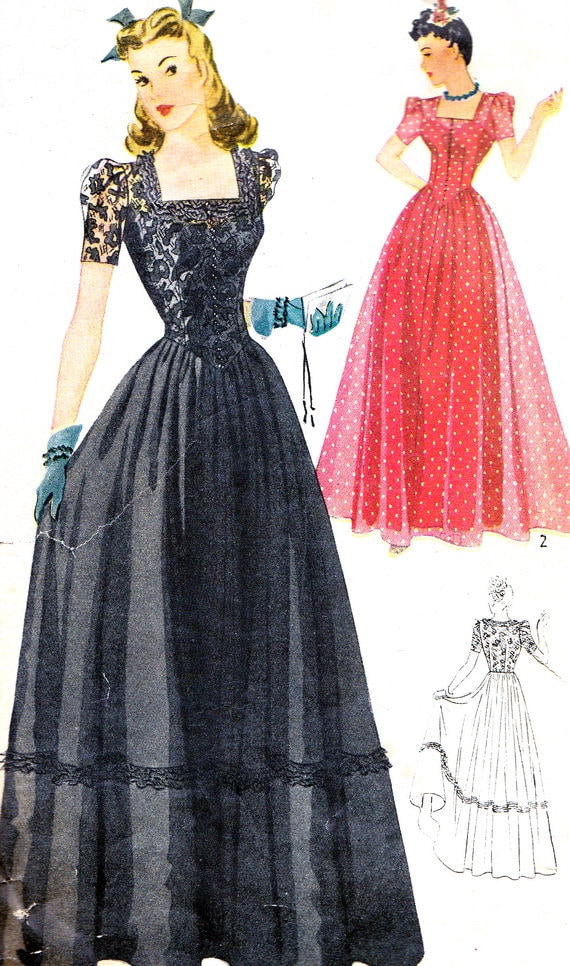Let’s Promenade: A Brief Look at Prom and Prom Fashions in the United States (Part 1)
As springtime blooms and buds turn into blossoms, so too do high schoolers’ thoughts turn to that age-old tradition: Prom (note that, strictly speaking, it’s “Prom,” not “the Prom.”). It’s time for girls to start shopping—or hopefully, SEWING—a beautiful and elaborate formal dress (so many gorgeous patterns from which to choose).
But is a formal dance with tuxedo-clad boys and princess-gowned girls really a time-honored tradition here in the U.S.? How far back does the modern notion of Prom go?
It is believed that the modern notion of a formal dance for unmarried young people has its roots in the debutante ball (from the French débutante, "female beginner"). In Great Britain, the presentation of débutantes to the King and Queen marked the start of the British social season of balls, tea parties, polo matches, and theatrical outings. Of course, all of these social gatherings had the added “bonus” of allowing the free—but chaperoned—mixing of young men and women, with an eye towards suitable marriage prospects. Young women usually wore a white, ivory, or pink evening dress, usually with a train draped over the arm. Similar “coming-out” activities were adopted in the U.S. in the late 19th and early 20th centuries (in the South, cotillions served a similar function). The word “promenade” is tied to these social events: the young ladies and their escorts formally entered the room in a promenade.
But debutante balls and cotillions were for wealthier young adults, not middle-class teenagers (the notion of which as a specific, definable group did not really take hold until the 1940s; until then, children were considered to be simply mini adults). The first proms were likely held at universities and were far more low-key occasions, and the first high school proms were as well—until the 1930s, a prom was more of a tea dance where the dress code was “Sunday best.”
Proms seem to first be mentioned in high school yearbooks in the 1930s, and by the late 1930s and 1940s they had evolved into a more formal occasion, an evening event where dancing was often preceded by a banquet. While the dress code was more formal than Sunday go-to-meeting clothes—floor length dresses were the norm—young teen-age girls would not have worn the slinky and glamorous gowns we often associate with that era (as seen on Hollywood starlets). And their escorts were never in tuxedos; they wore suits and ties.
As the U.S. entered World War II, it’s easy to imagine that a senior class dance might be especially poignant as a portion of the young men on the dance floor would have joined the armed forces or been drafted.
Finally, a charming vintage instructional film from the 1940s about proper prom etiquette. Watch as poor Frank tries to figure out how to
behave.
In Part 2, we’ll take a look at how prom dresses changed in the second half of the twentieth century.
Prom history and information from Wikipedia










